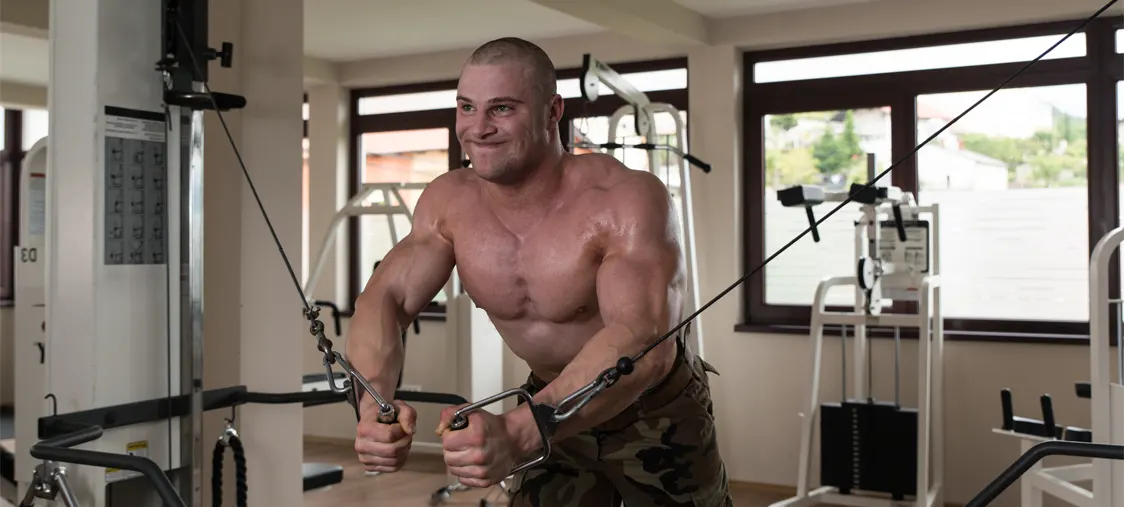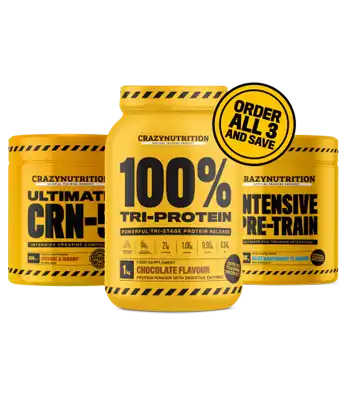Introduction to Cable Machine Exercises for Bodybuilding
Hey there, fitness enthusiast! If you’re looking to shake up your bodybuilding routine, you’ve come to the right place. Today, we’re diving into the world of cable machine exercises – a game-changer for many bodybuilders.
So, what exactly are cable exercises? Simply put, they’re strength training movements performed using a cable machine. These nifty devices use a system of adjustable pulleys and weight stacks to provide resistance. The cool thing is, that you can adjust the height of the pulleys and switch out attachments to target pretty much any muscle group you want.
Now, you might be wondering, “Why should I bother with cables when I’ve got my trusty dumbbells and barbells?” Great question! While free weights are awesome (and we’re not saying you should ditch them), cable exercises bring some unique benefits to the table. They’re generally safer on your joints, provide constant tension throughout the movement, and allow for a greater range of motion. Plus, they’re super versatile – you can hit your muscles from angles that are tough to achieve with free weights.
Advantages of Cable Exercises for Bodybuilding
Let’s break down why cable exercises are such a hit in the bodybuilding world:
- Safety First: Cable exercises are typically easier on your joints compared to free weights. The controlled range of motion means less risk of overextension or dropping weights on your toes (ouch!).
- Versatility is Key: With cables, you can easily switch up the angle of resistance to target different parts of a muscle. Want to hit your upper chest more? Just adjust the pulley height. It’s that simple.
- Constant Tension: Unlike free weights where the resistance changes based on gravity, cables keep your muscles under tension throughout the entire movement. This means more time under tension, which can lead to better muscle growth.
- Time-Efficient: Changing weights or switching exercises is a breeze with cables. This makes supersets and drop sets much easier to pull off, saving you time in the gym.
Now that we’ve covered the basics, let’s get into the nitty-gritty of some of the best cable machine exercises for bodybuilding.
Best Cable Machine Exercises for Upper Body
Cable Fly
STANDING CABLE FLY (Video Credit: James Harrison YouTube Channel)
How to do it:
- Set the pulleys at shoulder height.
- Grab a handle in each hand and step forward, arms outstretched.
- Keep a slight bend in your elbows, and bring your hands together in front of your chest.
- Slowly return to the starting position.
Pro tips:
- Focus on squeezing your chest at the peak of the movement.
- Experiment with different pulley heights to target different parts of your chest.
Sets and reps:
- For muscle growth, aim for 3-4 sets of 8-12 reps.
Benefits:
- Sports (Basel) 2022 study[1] said that, Cable flyes, similar to cable cross-overs, effectively target and enhance pectoralis muscle activation as the primary mover, contributing to chest muscle development.
- Allows for a greater range of motion compared to dumbbell flyes
- Keeps tension on the chest throughout the movement
Cable Lat Pulldown
Cable Lat Pulldown – Wide Grip (Video Credit: Boris Zivkovic YouTube Channel)
How to do it:
- Sit at a lat pulldown machine and grasp the bar with a wide grip.
- Pull the bar down to your upper chest, focusing on using your back muscles.
- Slowly return the bar to the starting position.
Pro tips:
- Keep your chest up and avoid leaning back excessively.
- Imagine pulling your elbows down to your sides, not just moving the bar.
Sets and reps:
- Start with 3 sets of 10-12 reps, increasing weight as you get stronger.
Benefits:
- Targets the latissimus dorsi (lats), the largest muscle in the upper body exercise
- A study published in Strength & Conditioning Journal[2] states that, It helps improve posture and upper body strength
- Great alternative for those who can’t do pull-ups
Cable Bicep Curl
Cable Bicep Curls – Full Video Tutorial and Step-by-Step Guide (Video Credit: Fit Father Project – Fitness For Busy Fathers YouTube Channel)
How to do it:
- Attach a straight bar to a low pulley.
- Standing facing the machine, curl the bar up towards your shoulders.
- Slowly lower the bar back down.
Pro tips:
- Keep your elbows close to your sides throughout the movement.
- Squeeze your biceps at the top of the curl.
Sets and reps:
- 3-4 sets of 10-15 reps is a good starting point.
Benefits:
- Provides constant tension on the biceps
- A study of 2020[3] states that, this allows for a fuller range of motion compared to barbell curls
- Can be performed with various attachments for different stimuli
Best Cable Machine Exercises for Lower Body
Cable Squat
Do Work Factory Low Cable Sumo Squat with Rope (Video Credit: Do Work Factory YouTube Channel)
How to do it:
- Attach a straight bar to a low pulley.
- Hold the bar at shoulder height and step back.
- Perform a squat, keeping the bar close to your body.
- Push through your heels to return to standing.
Pro tips:
- Keep your chest up and core engaged throughout the movement.
- Don’t let your knees cave inward.
Sets and reps:
- 3-4 sets of 10-12 reps is a good target for muscle growth.
Benefits:
- Target quads, hamstrings, and glutes
- Provides constant tension throughout the movement
- Less stress on the lower back compared to barbell squats
Cable Kickback
Glute Medius Cable Kickback (Video Credit: Clarice Barnett YouTube Channel)
How to do it:
- Attach an ankle strap to a low pulley.
- Face the machine and attach the cuff to your ankle.
- Keeping a slight bend in your standing leg, kick your working leg back and up.
- Slowly return to the starting position.
Pro tips:
- Keep your core tight and avoid arching your back.
- Focus on squeezing your glute at the top of the movement.
Sets and reps:
- Aim for 3 sets of 12-15 reps per leg.
Benefits:
- Isolates the glutes effectively
- Allows for a greater range of motion than machine alternatives
- Can be easily adjusted for different angles of pull
Core Exercises with Cable Machines
Cable Crunch (ab exercise)
Cable Crunch (Video Credit: Jim Stoppani, PhD YouTube Channel)
How to do it:
- Attach a rope to a high pulley.
- Kneel facing away from the machine, holding the rope behind your head.
- Crunch down, bringing your elbows towards your knees.
- Slowly return to the starting position.
Pro tips:
- Focus on curling your torso, not just pulling with your arms.
- Keep your hips stationary throughout the movement.
Sets and reps:
- 3-4 sets of 15-20 reps is a good target for ab development.
Benefits:
- According to MDPI study[4], Cable crunches effectively target and strengthen the rectus abdominis (six-pack muscles), enhancing core stability and contributing to improved posture.
- Allows for heavy loading of the abs
- Provides constant tension throughout the movement
Implementing Cable Exercises in Your Bodybuilding Routine
Now that you’ve got a solid repertoire of cable exercises, you might be wondering how to fit them into your routine. Here are a few ideas:
- Full Cable Workout: Try a full-body workout using only cable exercises once a week. This can be a great way to shock your muscles and break through plateaus.
- Superset with Free Weights: Pair cable exercises with dumbbell free weight exercises for killer supersets. For example, try cable flies immediately after the best barbell bench press exercise.
- Finishers: Use cable exercises as finishers at the end of your workout. The constant tension they provide is great for getting that final pump.
Remember, the key to progress is progressive overload. Gradually increase the weight, reps, or sets over time to keep challenging your muscles.
Proper Form and Technique
No matter what exercise you’re doing, proper form is crucial. Here are some general tips for cable exercises:
- Maintain a stable core throughout each movement.
- Control the weight both on the way up (or in) and on the way down (or out).
- Don’t rely on momentum – slow, controlled movements are key.
- Adjust the pulley height and your body position to ensure the cable is providing resistance in the right direction.
Advanced Cable Training Techniques
Alright, muscle enthusiasts! You’ve got the basics down, so let’s kick it up a notch. Here are some advanced techniques to really maximize your gains with cable exercises:
Drop Sets
Drop sets are a great way to push your muscles to the limit. Here’s how to do them with cables:
- Start with a weight you can lift for about 8-10 reps.
- Once you hit failure, quickly reduce the weight by about 20-30%.
- Keep going until you hit failure again.
- If you’re feeling extra spicy, drop the weight one more time and go to failure.
Pro tip: Cable machines are perfect for drop sets because you can change the weight so quickly!
Supersets and Tri-sets
Supersets involve doing two exercises back-to-back with no rest. Tri-sets are the same but with three exercises. Here are some killer combos to try:
Superset:
- Cable chest press immediately followed by cable flyes
Tri-set:
- Cable bicep curls, cable hammer curls, cable reverse curls
Remember, the goal here is to keep moving, so set up your exercises beforehand!
Partial Reps and Peak Contractions
Sometimes, less is more. Try these techniques to really feel the burn:
- Partial Reps: Instead of doing a full range of motion, focus on the top half of the movement where the muscle is most contracted. For example, with cable bicep curls, you’d curl the weight up fully, then only lower it halfway before curling up again.
- Peak Contractions: At the point of maximum contraction, hold and squeeze the muscle for 1-2 seconds. This works great for exercises like cable flies or lateral raises.
Unilateral Training
Don’t neglect training one side at a time! Unilateral exercises can help correct muscle imbalances and improve overall strength. Try these:
- Single-arm cable rows
- Single-leg cable Romanian deadlifts
- Single-arm cable lateral raises
Nutrition and Recovery for Optimal Results
Remember, folks, muscles aren’t built in the gym – they’re built in the kitchen and your bed! Here’s a quick rundown on nutrition and recovery:
Nutrition for Muscle Growth
- Protein is your best friend. Aim for about 1.6-2.2 grams per kg of body weight daily.
- Don’t fear carbs! They’re crucial for energy and recovery. Focus on complex carbs like whole grains, sweet potatoes, and oats.
- Healthy fats are important too. Think avocados, nuts, and fatty fish.
- Stay hydrated! Aim for at least 3-4 liters of water per day.
Recovery Tips
- Get your Z’s! Aim for 7-9 hours of sleep per night.
- Consider incorporating active recovery days with light cardio or yoga.
- Don’t skimp on stretching and best mobility workout.
- Listen to your body. If you need an extra rest day, take it!
Tracking Progress and Making Adjustments
You can’t improve what you don’t measure! Here’s how to keep tabs on your progress:
- Keep a workout log. Note the exercises, sets, reps, and weights used.
- Take progress photos. Sometimes the scale doesn’t tell the whole story!
- Measure key body parts monthly (arms, chest, thighs, etc.).
- Pay attention to how your clothes fit.
When it comes to making adjustments, remember these points:
- If you haven’t seen progress in 4-6 weeks, it’s time to switch things up.
- Gradually increase weight, sets, or reps over time (progressive overload).
- Don’t be afraid to try new exercises or techniques.
- Consider working with a trainer if you’re feeling stuck.
 Conclusion
Conclusion
Whew! We’ve covered a lot of ground, haven’t we? Let’s recap the key points:
- Exercises with cable machine are a fantastic tool for bodybuilding, offering constant tension and versatility.
- They can be used to target every major muscle group effectively.
- Advanced techniques like drop sets and supersets can help push past plateaus.
- Proper nutrition and recovery are crucial for seeing results.
- Tracking progress and making adjustments are key to long-term success.
Remember, bodybuilding is a journey, not a destination. It’s about consistent effort over time. Some days you’ll feel like a superhero, others you might struggle to lift the bar. That’s all part of the process!
So, next time you’re at the gym, don’t shy away from the cable machine. Embrace it! Experiment with different exercises, angles, and techniques. Your muscles will thank you for the new challenge.
Keep pushing, keep growing, and most importantly, enjoy the process. Here’s to your best physique yet! 💪🏋️♀️








